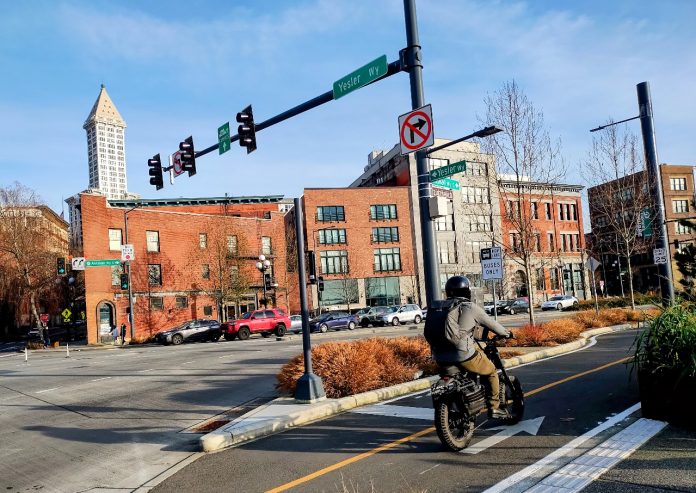
Following the landslide approval of Seattle’s $1.55 billion transportation levy last November, the Seattle Department of Transportation (SDOT) is wasting no time in getting projects into the pipeline that are aligned with what the voters signed up for. Last week, SDOT released its 2025 levy delivery plan, which lays out levy-funded work expected to happen this year — not only construction projects, but those entering planning and design — some major projects are still years away from construction. That makes the delivery plan a road map for major transportation improvements for the rest of the decade.
Such a quick ramp-up is a strong contrast with nine years ago, when the city struggled to be able to quickly deliver on the ambitious promises made to voters in the 2015 Levy to Move Seattle. While many of those promises were ultimately met in the long run, the perceptions around the slow start ultimately dogged the levy for years. Since then, internal reforms at the department have overhauled the project delivery process aiming to avoid being caught flatfooted again
The other side of that coin is the fact that the new levy’s promises to the voters were generally less ambitious and more conservative this time around. With few federal grants likely to come from a chaotic and vindictive Trump Administration, this approach may have been prudent. While aiming lower, SDOT appears poised to hit its levy targets this time around, and it has an agency veteran in Adiam Emery at the helm. But there are many reasons for urbanists to remain vigilant about opportunities that are to come, rather than settle into complacency.
A new era of city council involvement
At a press briefing last week, SDOT staff described how the delivery plan was developed, a process that seemed fairly in line with how things have been done in years past.
“As you can imagine, projects come into SDOT through a variety of ways,” SDOT’s Funding Plan Director, Meghan Shepard, told reporters. “There’s the Find It Fix It app, communications that we get from councilmember offices, and the city’s Customer Service Bureau. And there’s also many years of community requests, as well as some very foundational plans: the One Seattle Comprehensive Plan, our SDOT Seattle Transportation Plan.”
But in departure from past approaches, SDOT has also been meeting one-on-one with city councilmembers in their individual offices. Those meetings follow a budget amendment last November to put approximately half of 2025’s levy proceeds on hold pending council approval, with this delivery plan part of the approval process to unlock those funds.
District 1 Councilmember Rob Saka, chair of the council’s transportation committee, has been touting these meetings as a way to influence the department’s spending plans.
“Please do accept and take those meetings and briefings with SDOT, on any number of topics, particularly of importance and relevance right now is the department’s proposed spending plan on the levy,” Saka told his colleagues earlier this week in a briefing. “I want to applaud the department for making great efforts to reset relations with this floor [with city council offices], and [for] going into great detail with each individual one of us.”
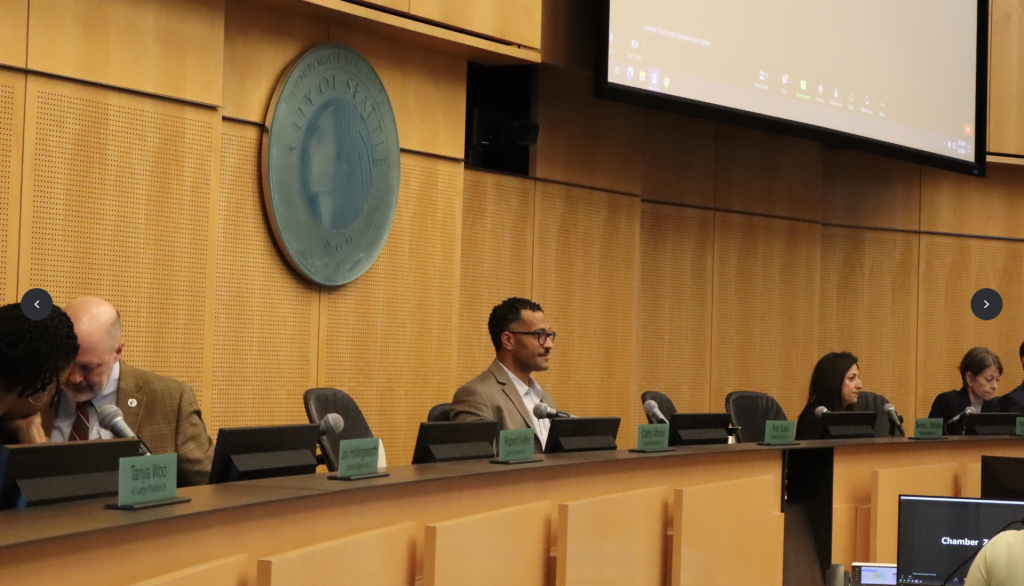
At last week’s press briefing, SDOT officials confirmed that the delivery plan had been modified in response to these meetings with councilmembers. This is a departure from past practice, when generally the only way councilmembers have been able to earmark funds for specific projects in their district was through the annual budget process. Though that process was freely used last fall as well, these meetings are a much more opaque way of moving priorities forward.
In a follow up, SDOT spokesperson Ethan Bergerson confirmed that at least two sets of projects had been added to the list after council consultation: neighborhood-scale safety projects at 8th Avenue NW at three intersections in Ballard, and on SW Henderson Street at West Crest Park in West Seattle.
Annual delivery plans during the Move Seattle era were usually coordinated with that levy’s oversight committee, but a new oversight committee hasn’t been fully formed yet. That too will take a different form, with one member from each individual city council district serving on the board as a direct voice for that district’s needs. It remains to be seen just how quickly that body will be able to get in place to provide guidance to SDOT as it more fully develops its spending plans, but those future members do seem to be missing a very critical time to be involved.
Applications to join the levy’s oversight committee just opened, and the city is accepting them through the end of February.
Safety upgrades on the way
With $160.5 million included in the levy for eight years of Vision Zero improvements, along with another $189 million for pedestrian safety, SDOT is set to get to work on a broad array of safety-related overhauls in 2025. The ones with the biggest potential to provide significant safety gains are the corridor-wide Vision Zero projects, which target the city’s high injury network — the streets where the vast majority of Seattle’s fatal and serious crashes occur.
One of the biggest corridors the levy will tackle is Rainier Avenue. In fact, the street appears all over the 2025 delivery plan: under safety projects, repaving projects, and transit projects. With long-term plans to upgrade the Route 7 to the RapidRide R by 2031 and overdue maintenance needs along the corridor, SDOT is planning to orchestrate a phased approach to Rainier work. The first phase will be design work to make near-term safety changes to the north end of the corridor, a segment with some of the highest volumes and the highest crash rates.
Along Rainier Avenue between S Jackson Street, near the International District, and S Walden Street in Mount Baker, SDOT plans to start work on numerous overlapping projects within the coming months.
“The theme is basically this: we don’t believe it’s appropriate to wait to do safety improvements along Rainier and and [transit] service improvements, and so that is why you see so many,” SDOT’s Senior Deputy Director Francisca Stefan told The Urbanist. “We are working as an agency to make sure that they fit together and that we’re not installing things now that don’t have immediate utility, or that would, you know, be large investments that would have to come back out so it’s kind of, it’s kind of driven by the urgency of the need and also recognizing that we want to be thoughtful and not have to take a whole lot out, so we’re kind of doing both at the same time.
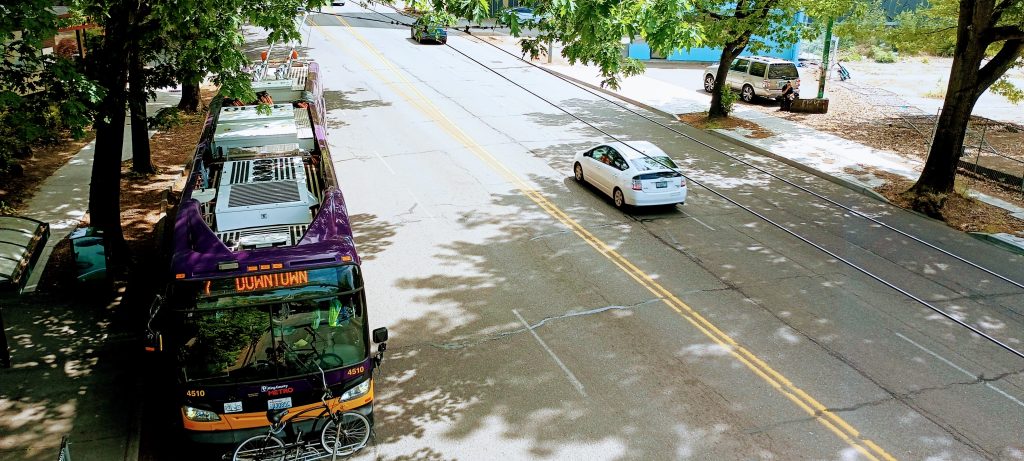
Other Vision Zero projects that are set to start planning include:
- 12th Avenue S Safety Corridor
- S Jackson Street Safety Corridor
- S Othello Street/S Myrtle Street Safety Corridor
- Spring Street Safety Corridor
Along with the North Rainier Avenue corridor work, SDOT also plans to start design on a Renton Avenue S Safety Corridor project this year. Meanwhile, projects that have been in the pipeline but will start construction this year include:
Road maintenance and modernization
With a levy that is very focused on road and bridge maintenance, the dozen-plus arterial corridors set to see major maintenance are some of the most important projects in the levy. Not only are these streets usually high-use transit corridors, the repaving projects will also come with the opportunity to add pedestrian, bike, and speed control infrastructure at the same time, part of the city’s Complete Streets process.
As we’ve seen in the past, sometimes that process can run on autopilot until community members push for more substantive improvements, as they did in the case of 15th Avenue NW in Ballard. In other instances, the perceived need to prioritize traffic operations makes broader upgrades much harder to add, as was the case with an impending repaving project on Denny Way. That’s why it’s important to stay involved early in the process before design advances, where it’s harder to get the city to change gears.
Projects that are set to start design this year:
- E Marginal Way S: 1st Avenue S to 16th Avenue
- N 130th Street: 1st Avenue NW to I-5
- Pinehurst Way NE: Roosevelt Way NE to 15th Avenue NE
- Roosevelt Way NE: NE 92nd St to Pinehurst Way NE
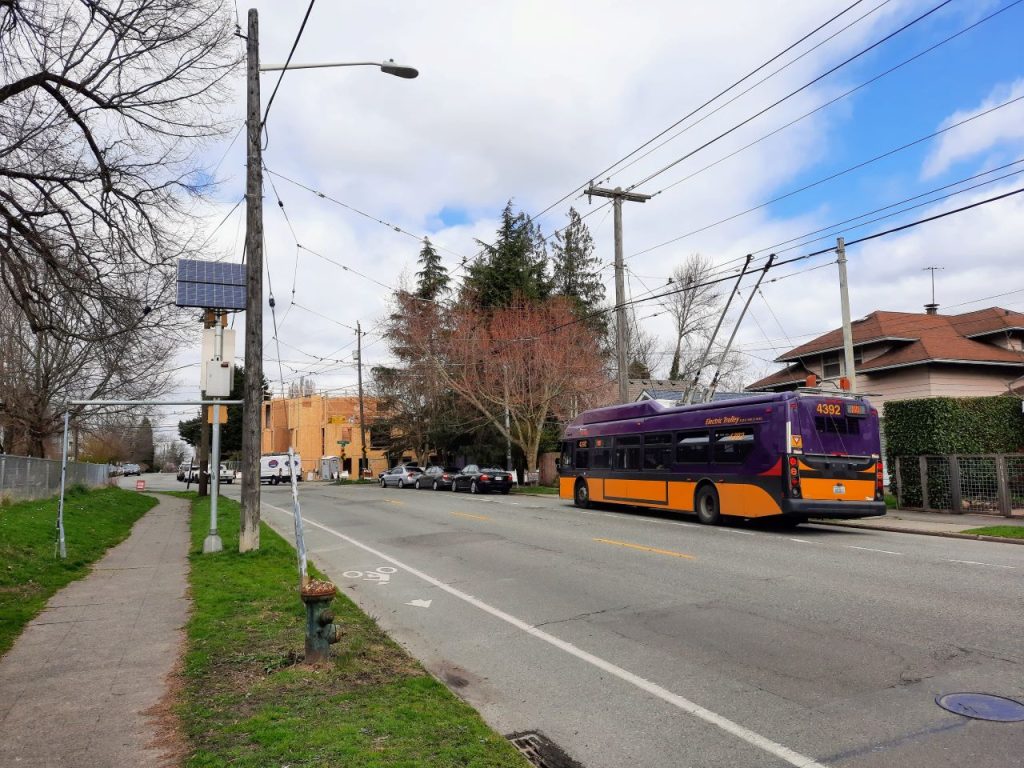
Projects that are starting planning:
- Beacon Avenue S: 14th Avenue S to 39th Avenue S
- 12th Avenue S and 14th Avenue S: Jose Rizal Bridge to Beacon Avenue S
- Elliott Avenue and Western Avenue: Bell St to Thomas St
- Rainier Avenue S: S Walden St to S Jackson Street (see above)
Transit spending
Unlike the levy’s goals around sidewalks, street repaving, and bridge maintenance, the codified goals around transit upgrades are much less concrete. Under the levy ordinance, the city will complete at least 160 spot improvements to improve “bus reliability, access, equity,
and safety.” With only one new RapidRide line expected during the levy’s eight-year term, the era of big capital projects for transit is fading, with smaller upgrades sprinkled citywide, but there’s not a quantified goal around what those improvements should do for the city’s transit system, collectively.
The 2025 delivery plan illustrates how broad those spot improvements are, with everything from bus stops to street repaving included:
- Install up to 20 bus benches at various locations.
- Complete Route 125 bus zone Improvements.
- Expand Aurora Avenue N bus lane operations between N 38th and N 115th streets.
- Sidewalk repair at bus stops at various locations.
- Conduct historic shelter maintenance – Rainier Avenue and S Wildwood St, and Westlake Avenue N and Dexter Avenue N.
- 3rd Avenue Reconstruction between Stewart and Virginia streets.
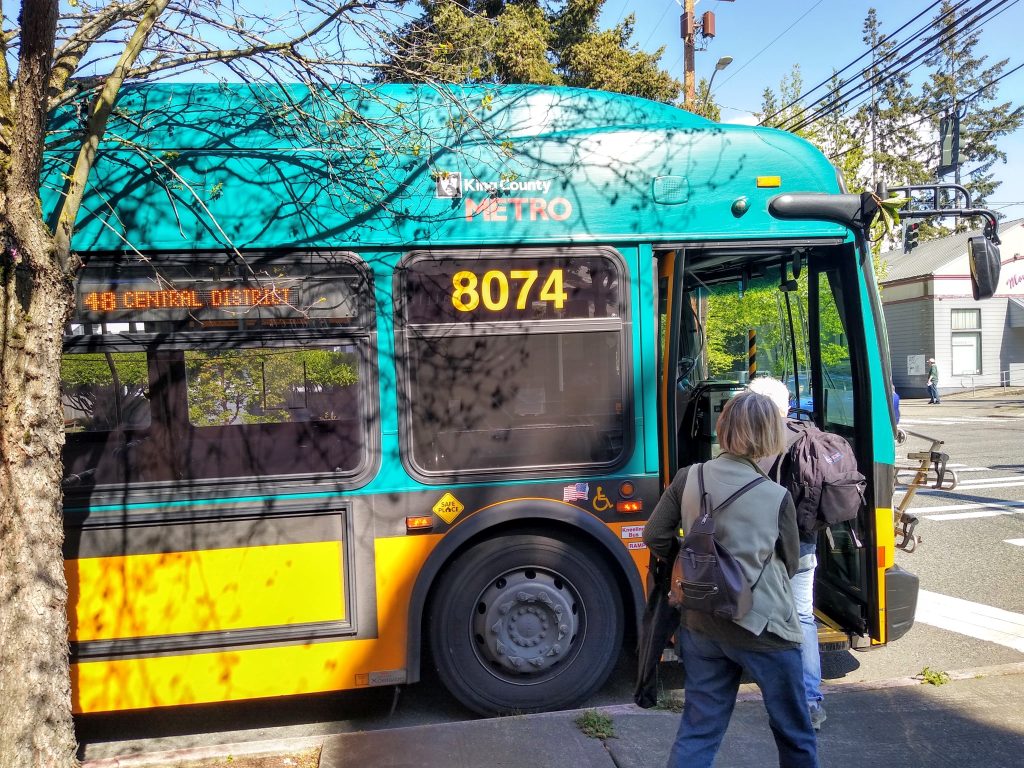
When it comes to upgrades that will keep buses moving as Seattle’s traffic levels continue to increase, the delivery plan cites the start of design work on some more ambitious projects:
- 24th Avenue Bus Only Lane
- 30th Avenue NE Paving and Bus Improvements
- Broadway Safety Improvements
- E Jefferson Street/9th to 12th Re-channelization
- Jackson Street Safety Improvements
- MLK Jr Way S/S Myrtle to S Othello Safety Improvements
- N 92nd Street Bus Bulbs
- Route 8 Improvements
- SW Oregon Street Asphalt Overlay
- W Nickerson Street/3rd Avenue W Re-channelization
Bike projects
The 2025 delivery plan definitely reflects the step back that the new levy takes when it comes to bike projects, but there are some projects that could be incredibly impactful when it comes to providing new safe bike connections. In addition to the bike facilities coming with the N 130th Street and Henderson Street safety projects, referenced above, SDOT will start design on a number of new protected bike lane (PBL) projects this year including:
- 8th Avenue (Westlake to Bell Street) PBL
- Beacon Avenue S Middle Segment
- Beacon Avenue S Southern (S Myrtle Street to 39th Avenue S)
- Highland Park Way SW (W Marginal Way SW to SW Holden St)
And projects entering planning include:
- 4th Avenue PBL between Dilling and Main St
- 12th Avenue/12th Avenue S between Madison St and Jose Rizal
- 14th Avenue S between S Director Street to South Park Bridge at Dallas
- 520 Bridge Connections – 10th Avenue E between E Miller St and Broadway
- 520 Bridge Connections – Roanoke between I-5 and Eastlake
- Georgetown Connections Study/Albro to Cleveland High School
- NE 47th St Bike/Ped Bridge Study
- Rapid Ride R Bicycle Facility Alternatives Analysis (Rainier Avenue S between MLK Jr. Way S and S Jackson St)
On top of everything, SDOT is ramping up work on new sidewalks, in an attempt to meet the new levy’s goal of building 250 blocks of new sidewalks by 2029, a pace that would be double the rate completed during the Move Seattle era. The delivery plan has a full breakdown of where the city plans to start building those, with community walks within neighborhoods set to determine some future projects.
Citywide, there are projects happening in every corner that are worthy of getting excited about in this spending plan. Now the hard work begins of actually making sure all of these projects are followed through to completion.
Ryan Packer has been writing for The Urbanist since 2015, and currently reports full-time as Contributing Editor. Their beats are transportation, land use, public space, traffic safety, and obscure community meetings. Packer has also reported for other regional outlets including Capitol Hill Seattle, BikePortland, Seattle Met, and PubliCola. They live in the Capitol Hill neighborhood of Seattle.


